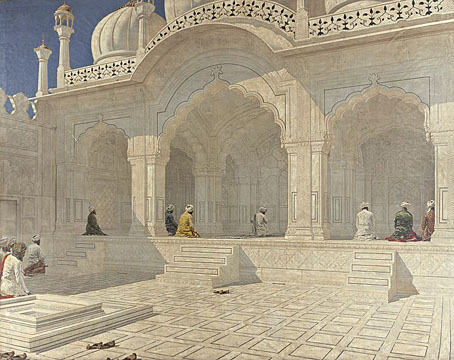
Pearl Mosque, Delhi (late 1880s).
I have a recurrent fascination with the paintings of historical and academic artists simply because their work has often been neglected, disdained, and rendered unavailable for so long. When art books and the critics who write them are mainly concerned with following avant-garde trends anyone who doesn’t come up to par is completely ignored, at least until critical fashion begins to change. As I’ve said in the past, one of the positive things about the Web is the way that this imbalance is redressed by the bringing to light of paintings by artists which have been sitting forgotten in museum storerooms for years.
Vasily Vereshchagin (1842–1904) was a Russian war artist whose The Apotheosis of War (1871) is sufficiently symbolic to make it the most reproduced of his pictures. Among his canvases of various campaigns there are several paintings resulting from his travels through central Asia. Wikipedia has recently added to its store of Vereshchagin paintings so I’d not seen any of these before. Many are striking compositions with unusual perspectives, and a photographic attention to light and shade. Some of the details are so accurate, and the shadows so precise, I wonder whether Vereshchagin used a camera to capture a scene which he would have also sketched in colour before painting a finished version later on. Most of the titles and dates of all these works come via Wikipedia and Google Translate so the usual caveats apply.
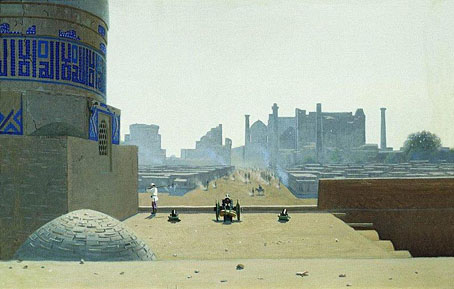
Main Street in Samarkand, from the height of the citadel in the early morning (1869–1870).
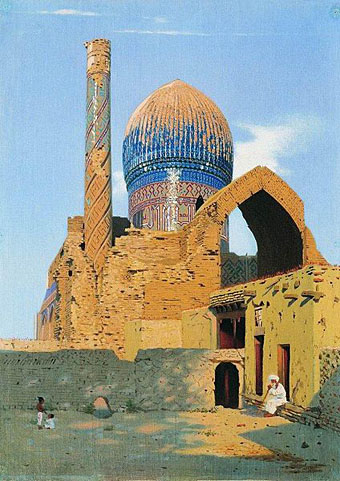
Gur-Emir Mausoleum. Samarkand (1869–1870).
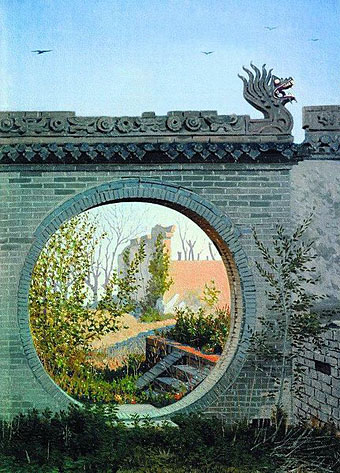
A Garden gate in Chuguchak (1869–1870).
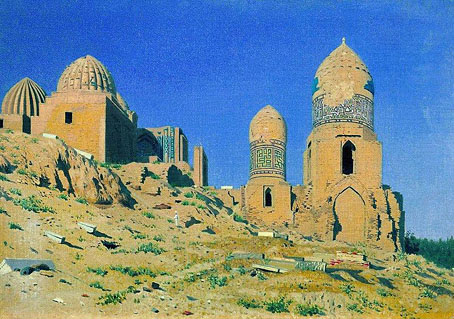
Mausoleum of Shah-i-Zinda in Samarkand (1869–1870).
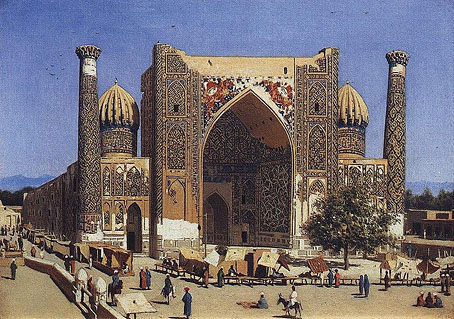
Shir-Dor Madrasah on Registan Square in Samarkand (1869–1870).
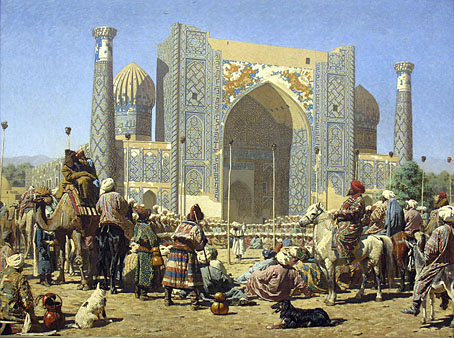
They are Triumphant (1872).
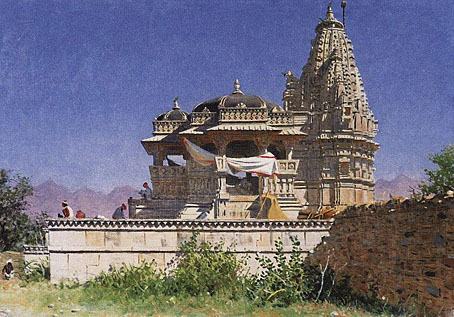
Brahman Temple (1874–1876).
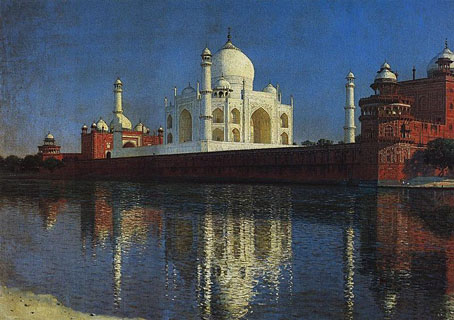
Taj Mahal Mausoleum, Agra (1874–1876).
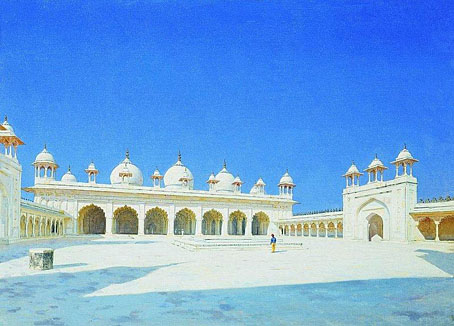
Moti Masjid (Pearl Mosque) of Agra (1874–1876).
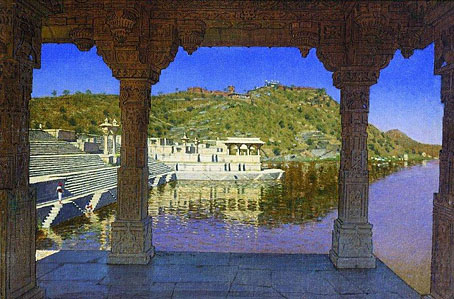
Quay on the lake in Udaipur (1874).

Evening at the lake. One of the pavilions on the waterfront in Udaipur (1874).
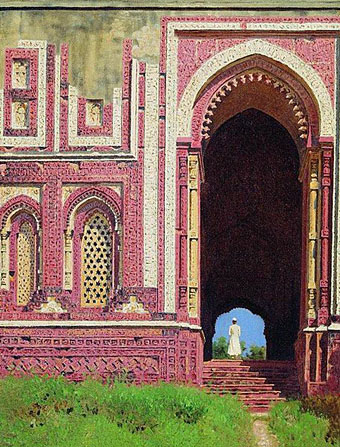
Gate near the Qutub Minar. Old Delhi (1875).
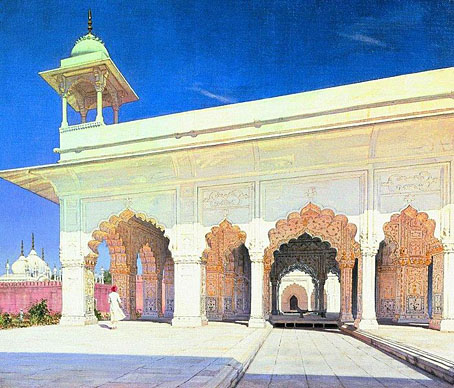
Throne Room of the Great Mogul Shah Jahan and-Aurang Zeb at Fort Delhi (1875).
Previously on { feuilleton }
• Taj Mahal panoramas

Teaching Asian Studies as l do from time to time, including a textual analysis of the Taj Mahal, these are quite luminous works; the colouring touches my heart:)
Thanks for bringing them to light!
Ian Bell
(Mlebourne)